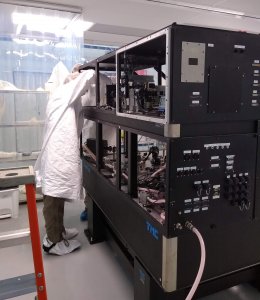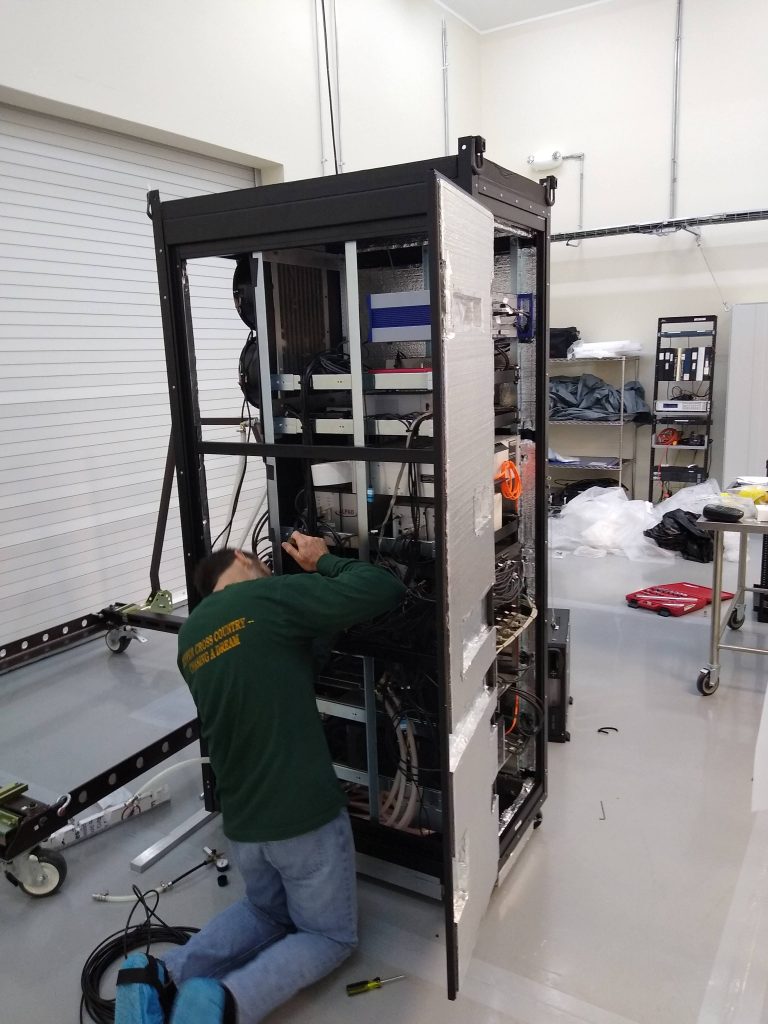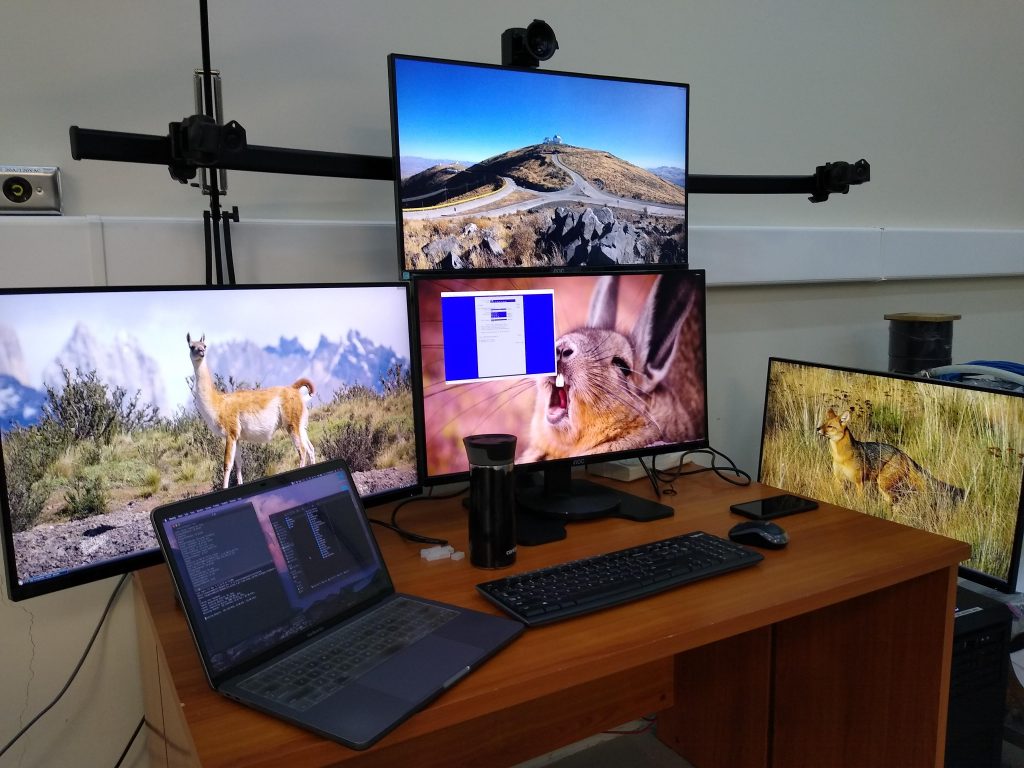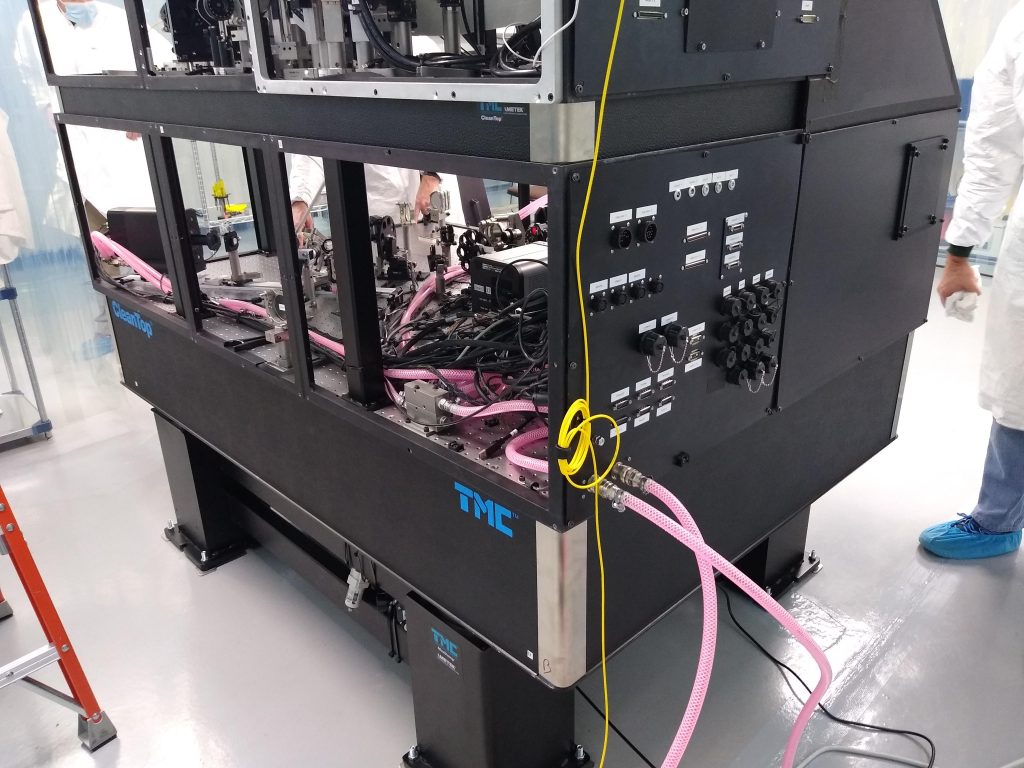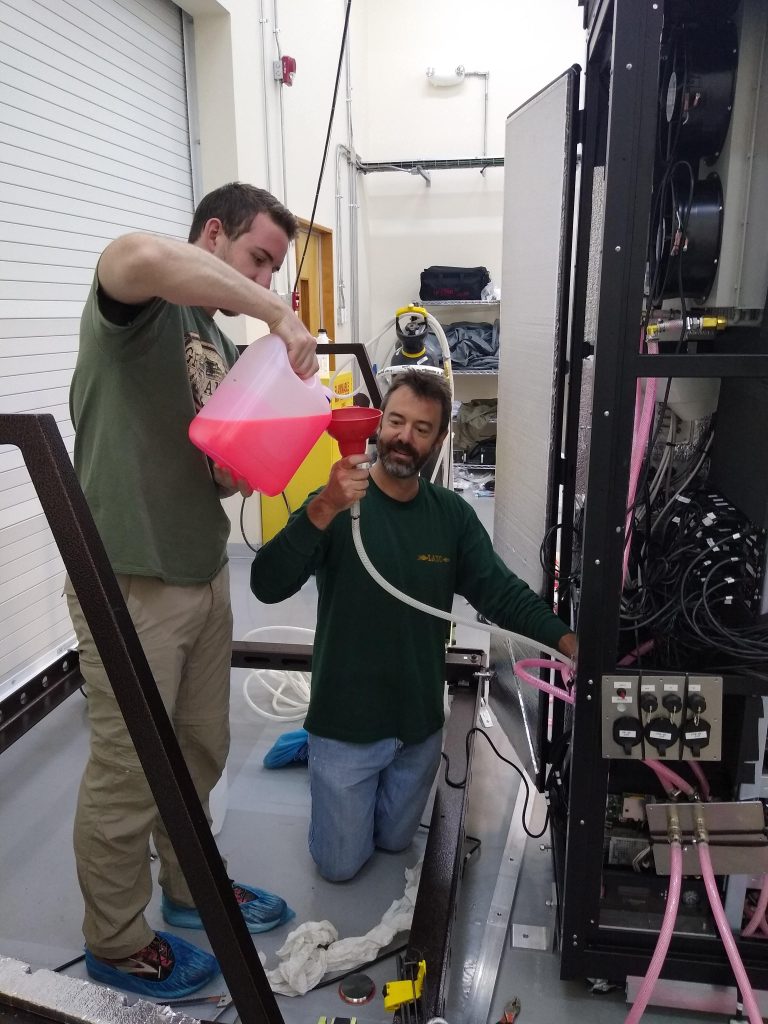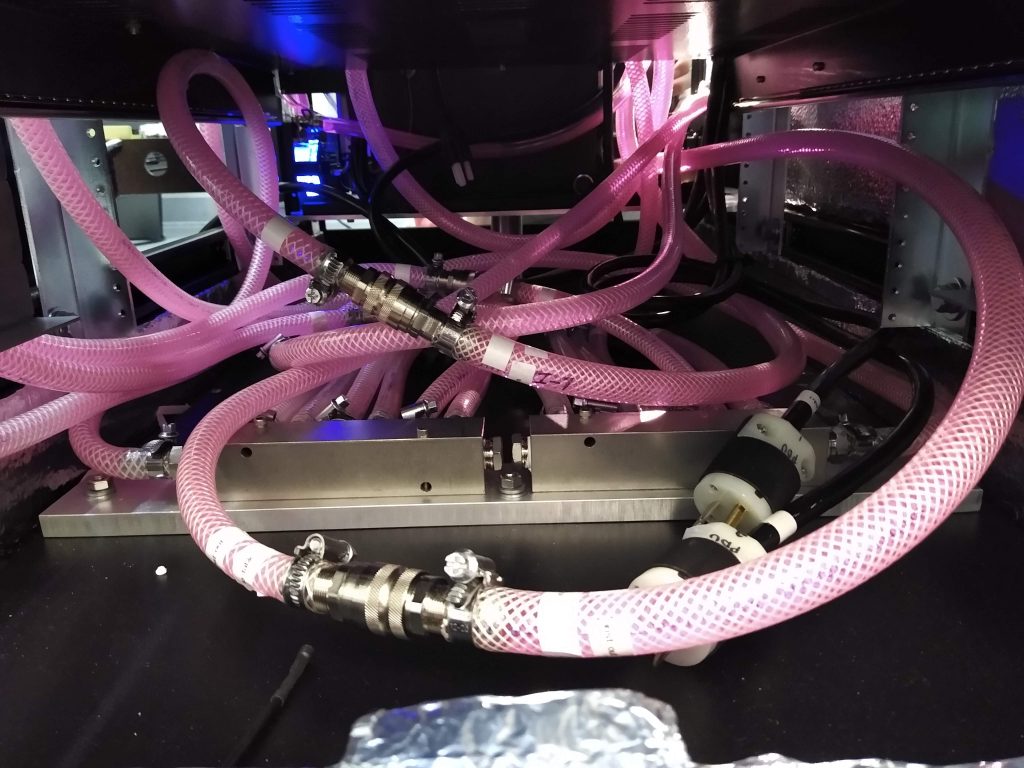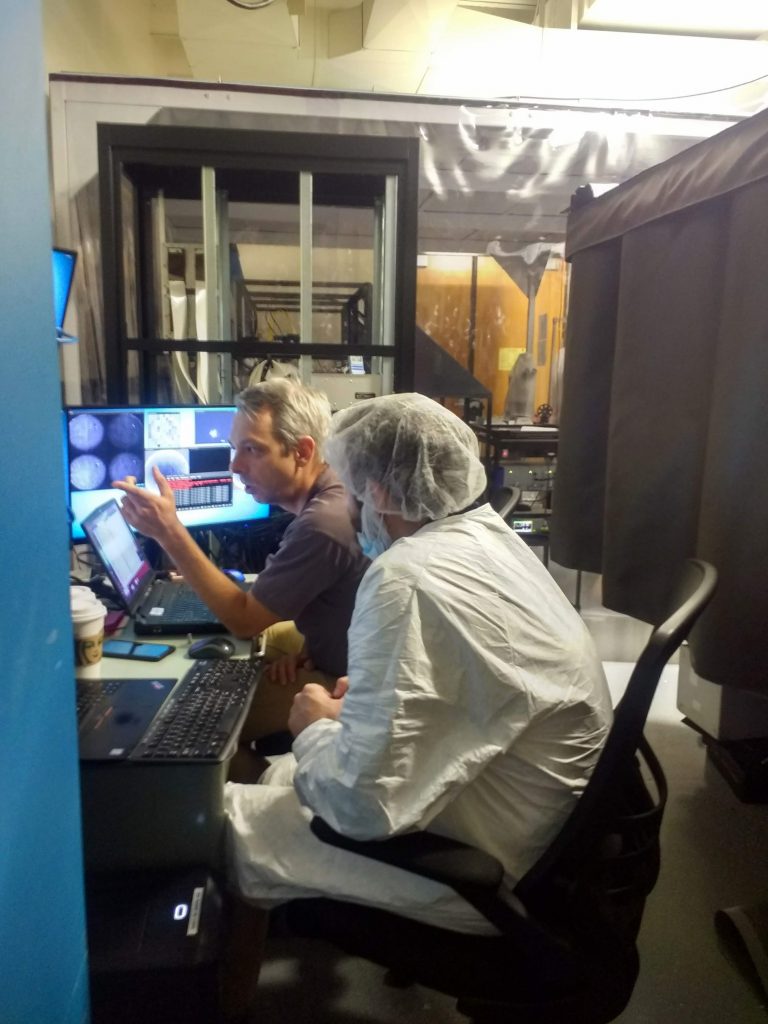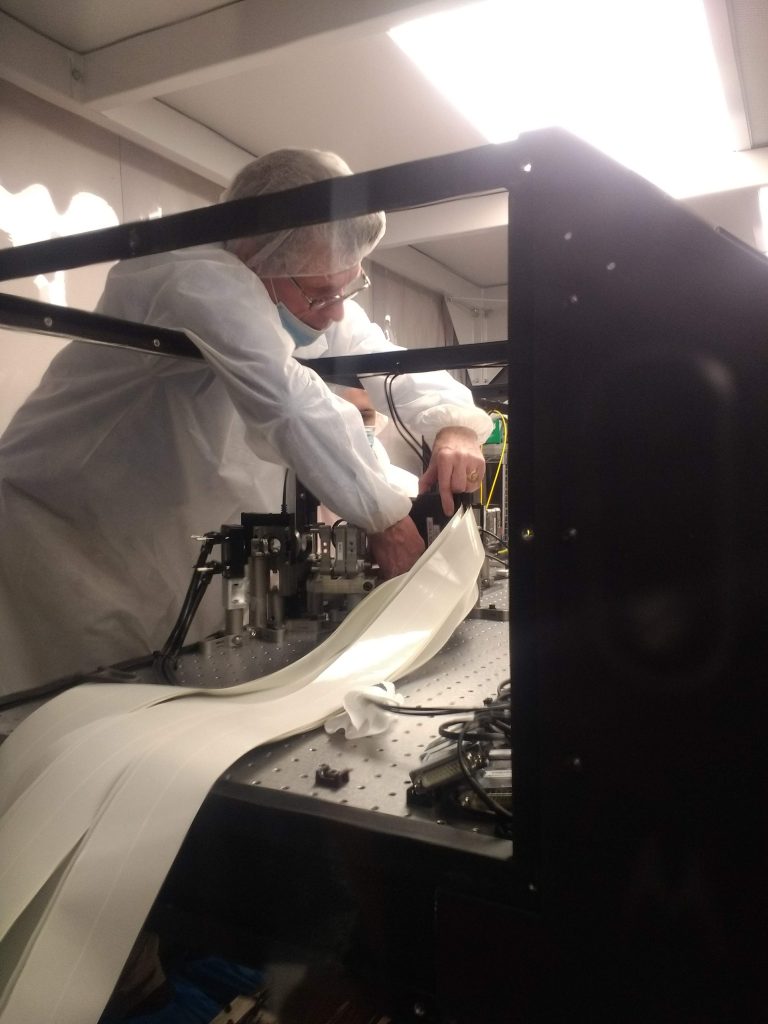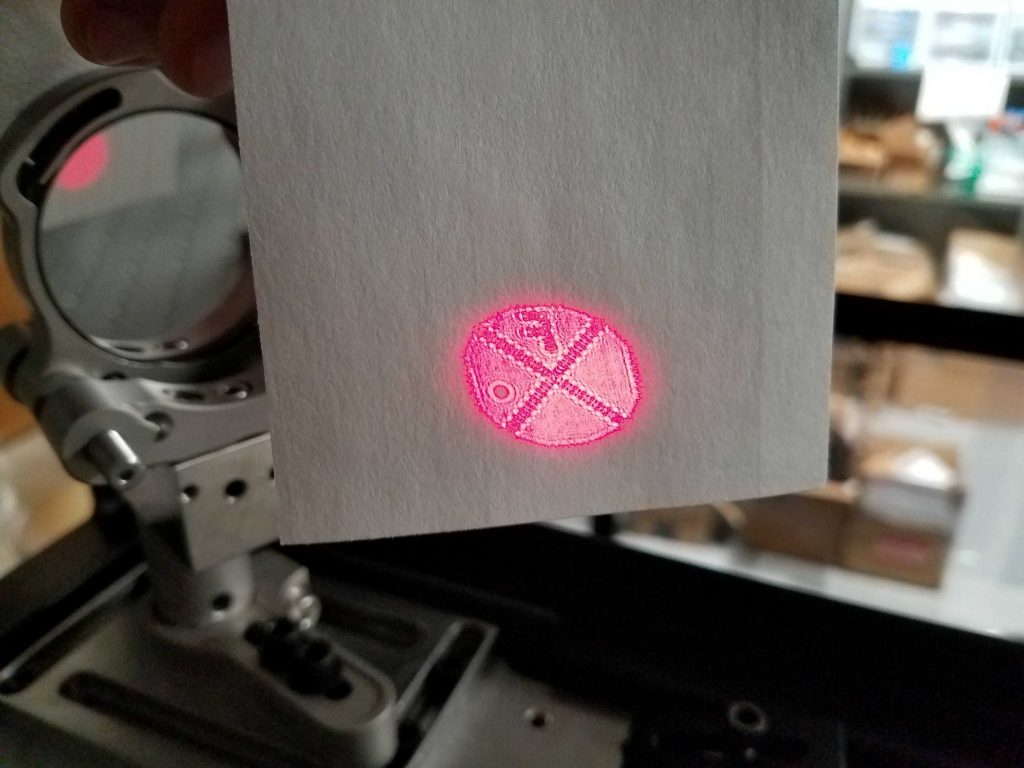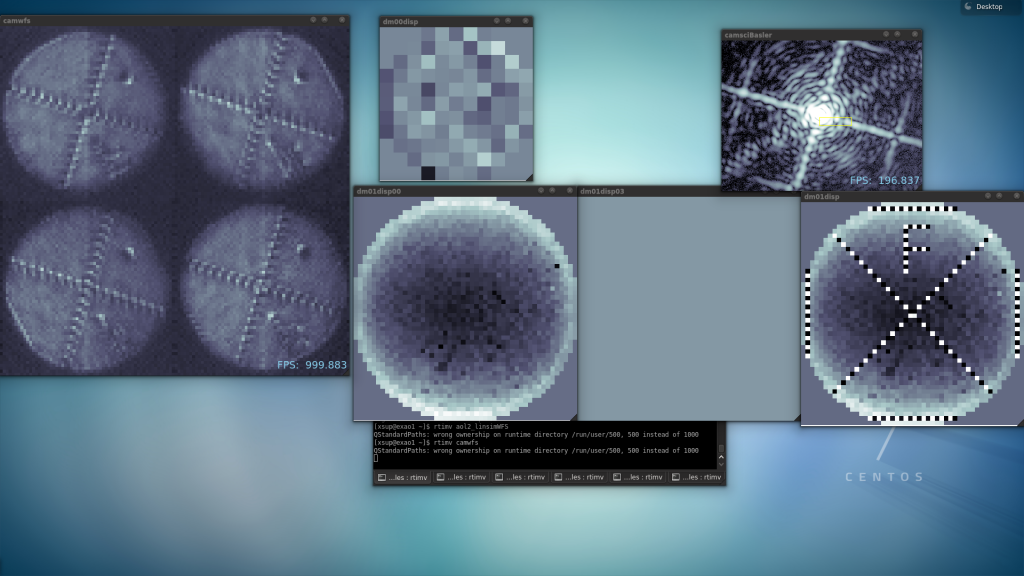Today we got our first proper airy disk at LCO!
This morning, Laird and Alex rotated the K-mirror to a more optimal position and re-aligned the rest of the optical train. I switched out a board in an ALPAO driver to one that lets us power the NCPC (non-common-path-corrector) DM remotely, which saves us many hypothetical trips to and from the Nasmyth platform. Jared did…well, a lot of everything.
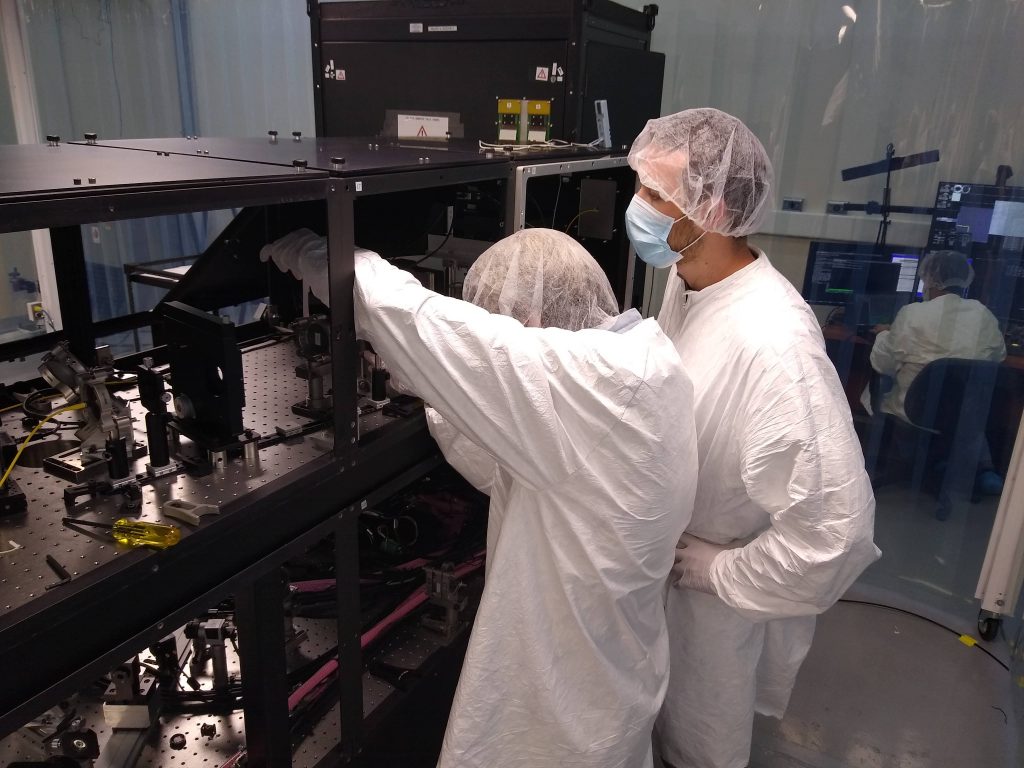
Alignment specialists, aligning. 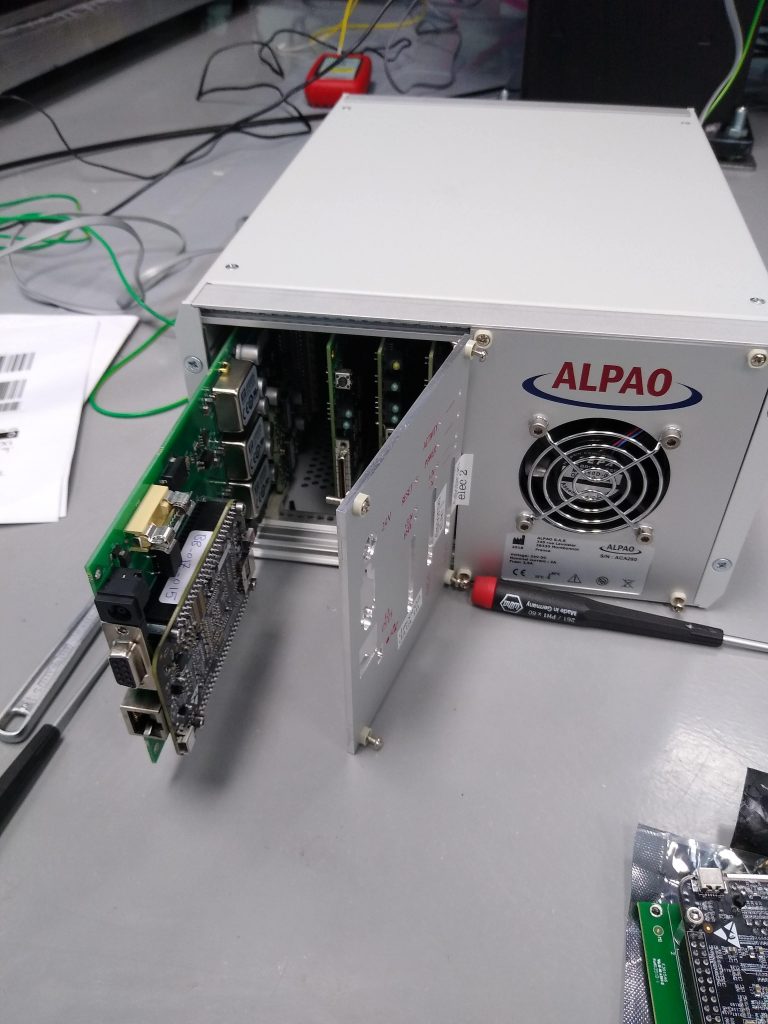
The innards of an ALPAO driver
One tool that has proven useful in the alignment process is an “F”- and “X”-shaped pattern on the 2K deformable mirror (previously featured here), which we can view in high resolution on our LOWFS (low-order wavefront sensing) camera.
After Alex and Laird were happy with the alignment, I drove out (most of?) the remaining system aberrations with the “eye doctor” script, which attempts to find the combination of Zernike modes on the deformable mirrors that maximizes our Strehl.
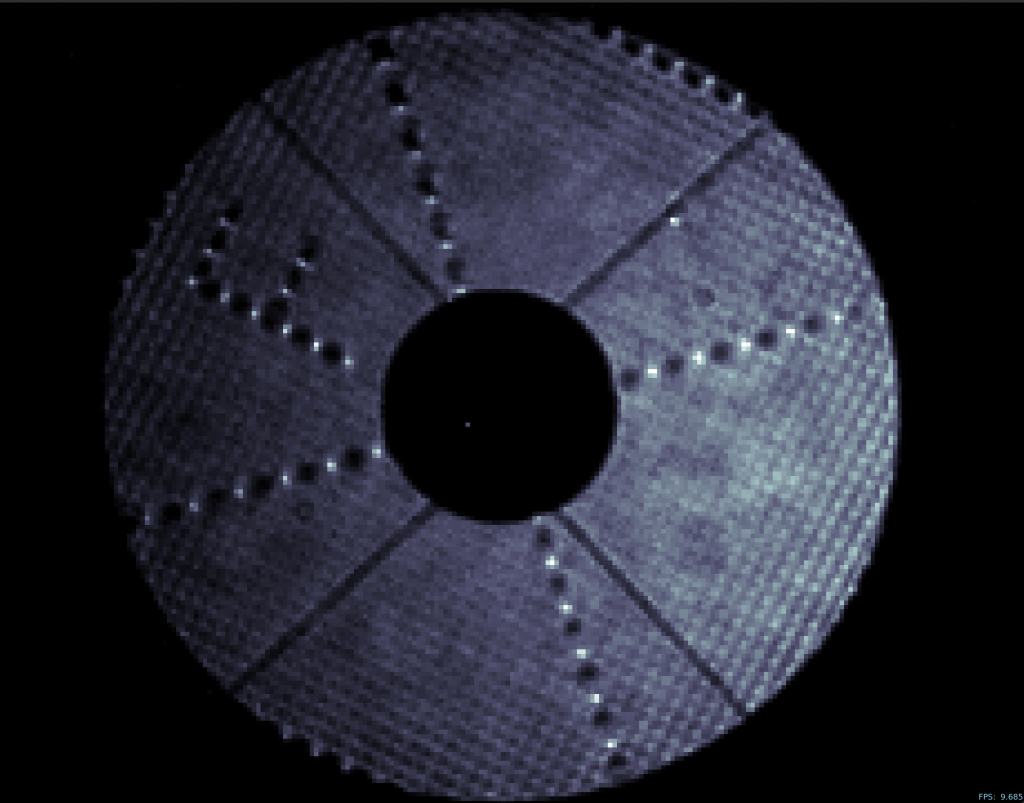
Alignment F-Test on the 2-Kilo DM, as imaged on the pupil viewer 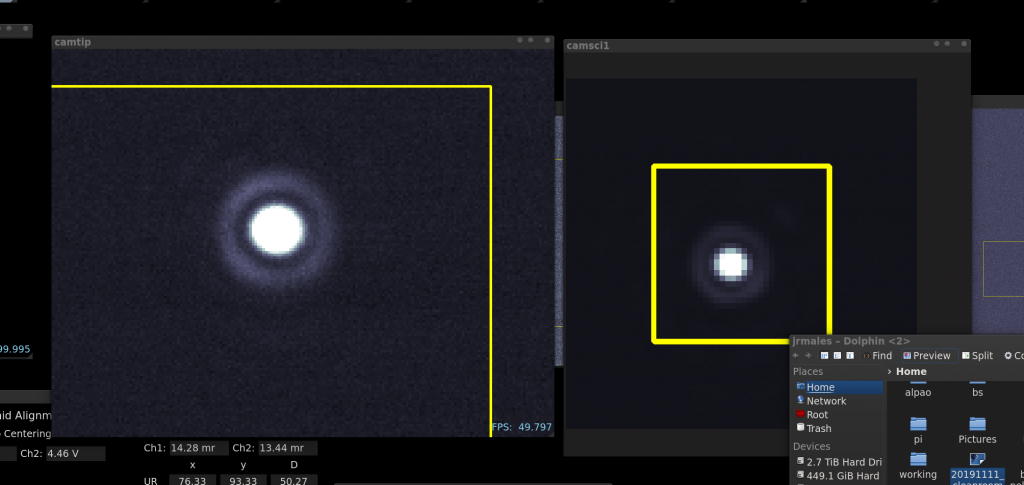
Instrument PSFs on the pyramid tip (left) and science camera #1 (right), post alignment and eye doctor. We have airy disks!
Reinforcements in the form of Joseph Long arrived this afternoon, although fumigation delayed his luggage in Santiago and left him (temporarily, we hope) dispossessed of his worldly goods (and a few supplies for MagAO-X). The MagAO-C team joined us after dinner for a tour of MagAO-X.

The united MagAO-C and MagAO-X teams walk up to the halfway house after dinner. 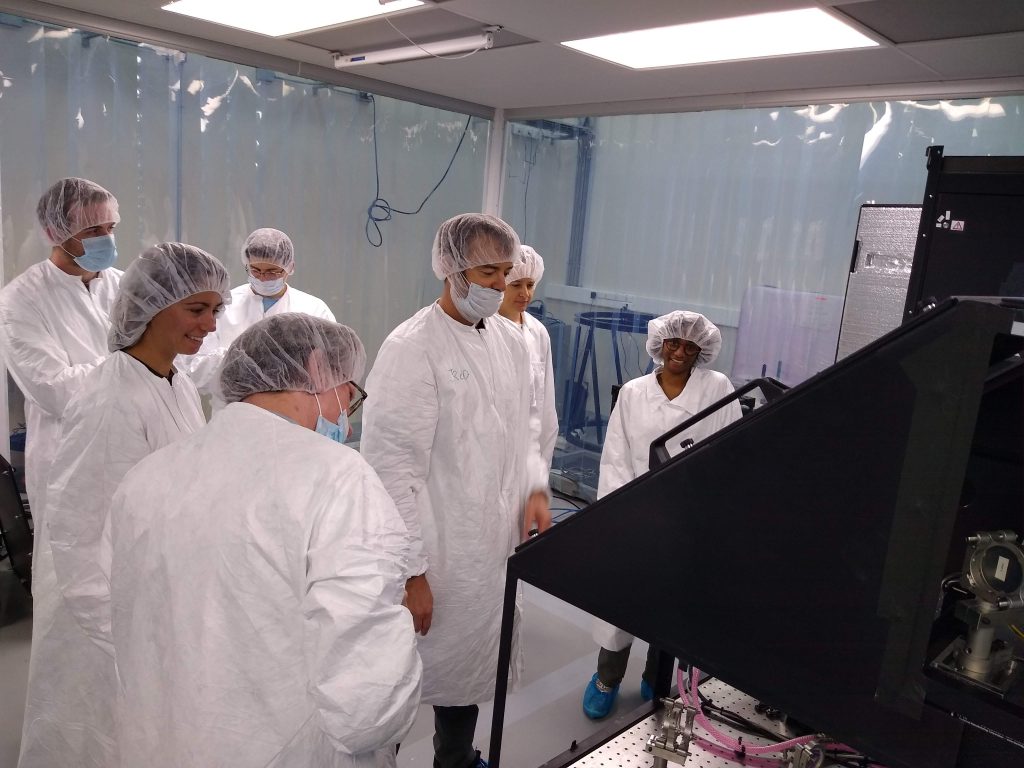
The tour.
After the tour completed and the crowds dispersed, Alex and Laird reinstalled the panels, shielding the instrument from prying eyes (and unwanted particles—of both the massive and massless variety). Jared installed the blower (the large white tube entering the instrument table from the left) to supply the optics with a soothing breeze.
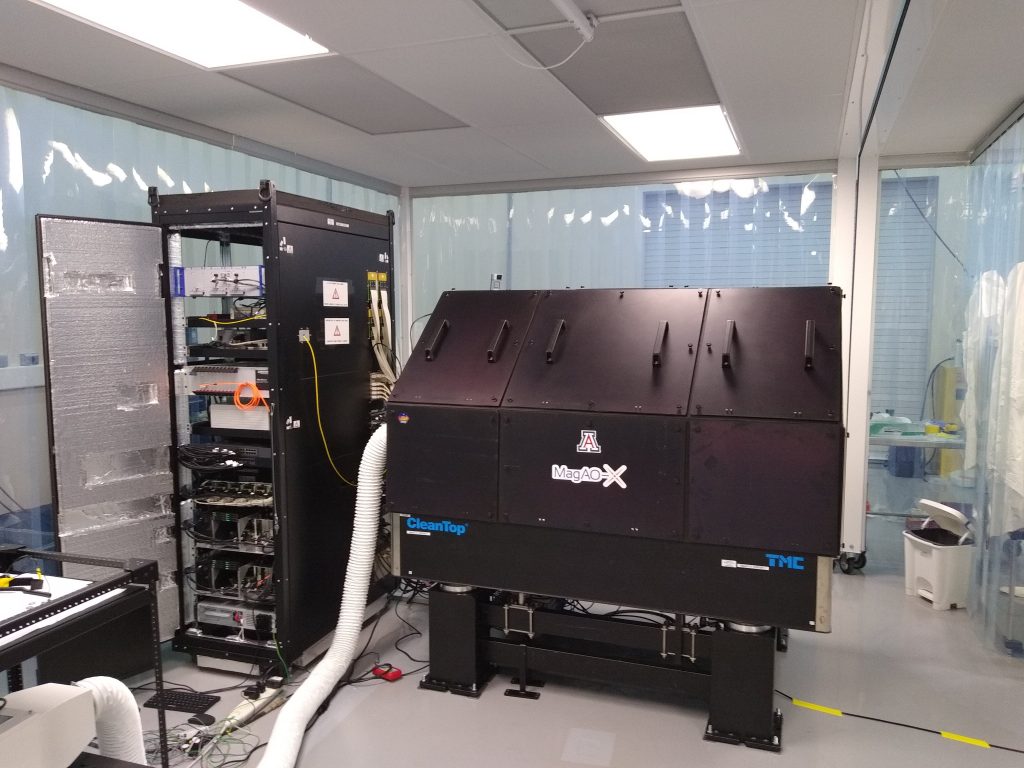
After spying a guanaco in the far distance earlier in the week, I finally encountered two up close yesterday. They were surprisingly…pungent.

As always, we stopped to watch the sunset.

For the song of the day, I present “Stairway to the Stars” by the Queen of Jazz herself, Ella Fitzgerald.
